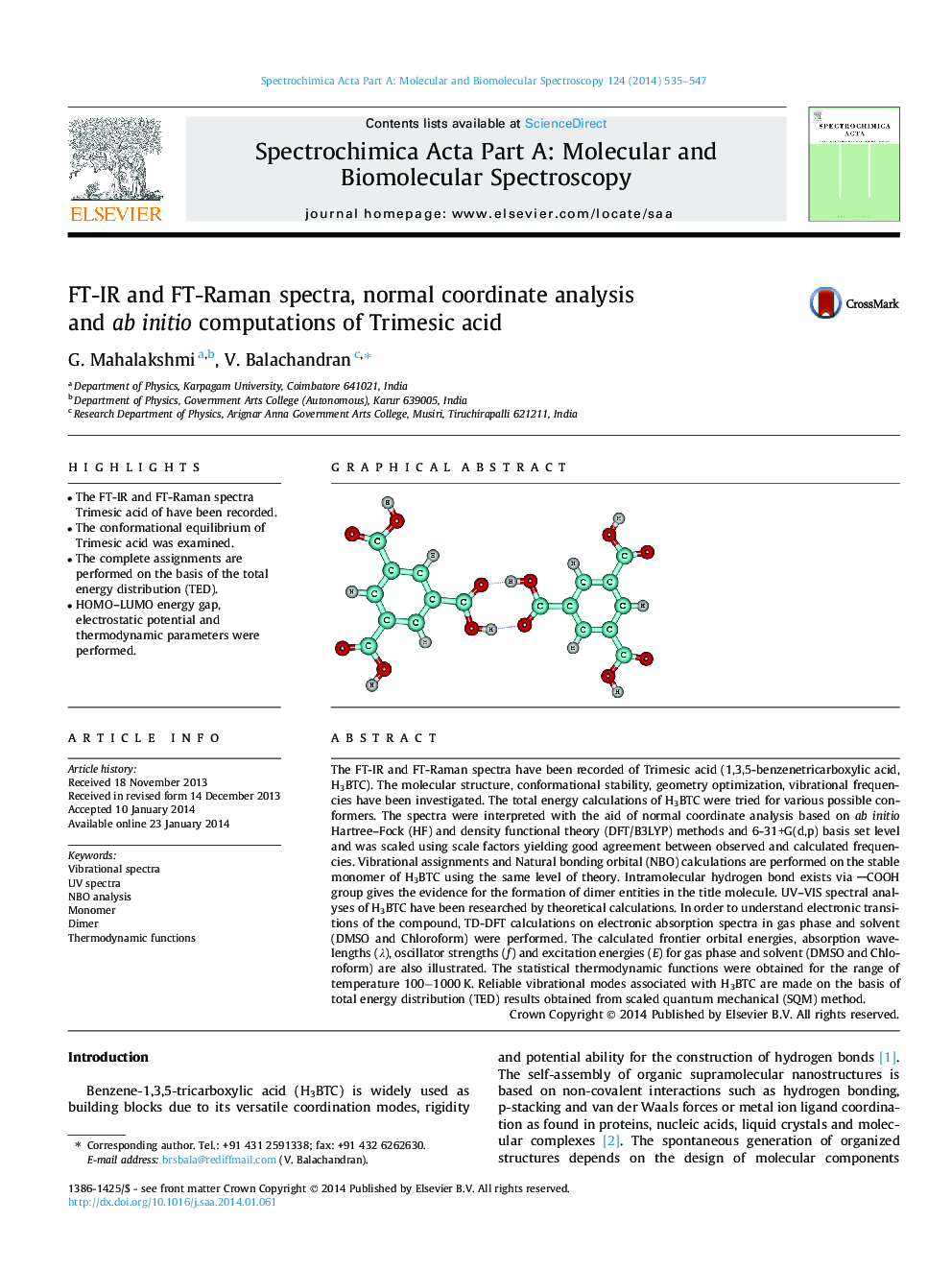| Article ID | Journal | Published Year | Pages | File Type |
|---|---|---|---|---|
| 1234322 | Spectrochimica Acta Part A: Molecular and Biomolecular Spectroscopy | 2014 | 13 Pages |
•The FT-IR and FT-Raman spectra Trimesic acid of have been recorded.•The conformational equilibrium of Trimesic acid was examined.•The complete assignments are performed on the basis of the total energy distribution (TED).•HOMO–LUMO energy gap, electrostatic potential and thermodynamic parameters were performed.
The FT-IR and FT-Raman spectra have been recorded of Trimesic acid (1,3,5-benzenetricarboxylic acid, H3BTC). The molecular structure, conformational stability, geometry optimization, vibrational frequencies have been investigated. The total energy calculations of H3BTC were tried for various possible conformers. The spectra were interpreted with the aid of normal coordinate analysis based on ab initio Hartree–Fock (HF) and density functional theory (DFT/B3LYP) methods and 6-31+G(d,p) basis set level and was scaled using scale factors yielding good agreement between observed and calculated frequencies. Vibrational assignments and Natural bonding orbital (NBO) calculations are performed on the stable monomer of H3BTC using the same level of theory. Intramolecular hydrogen bond exists via COOH group gives the evidence for the formation of dimer entities in the title molecule. UV–VIS spectral analyses of H3BTC have been researched by theoretical calculations. In order to understand electronic transitions of the compound, TD-DFT calculations on electronic absorption spectra in gas phase and solvent (DMSO and Chloroform) were performed. The calculated frontier orbital energies, absorption wavelengths (λ), oscillator strengths (ƒ) and excitation energies (E) for gas phase and solvent (DMSO and Chloroform) are also illustrated. The statistical thermodynamic functions were obtained for the range of temperature 100−1000 K. Reliable vibrational modes associated with H3BTC are made on the basis of total energy distribution (TED) results obtained from scaled quantum mechanical (SQM) method.
Graphical abstractFigure optionsDownload full-size imageDownload as PowerPoint slide
